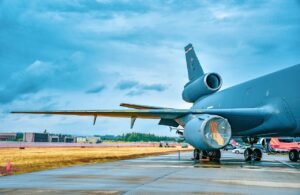In this article, we’re taking a look at the role reverse engineering plays in the aerospace and defence industry and answering the question, “What is aerospace reverse engineering?”
Imagine the challenge of restoring a historic aircraft with parts that haven’t been manufactured in decades, or consider the intricate task of integrating modern composite materials into existing jet engines to significantly improve fuel efficiency and reduce emissions. These scenarios underscore the critical role of aerospace reverse engineering in both preserving the past and pioneering the future of aviation and space exploration.
What Is The Difference Between Reverse Engineering and Forward Engineering?
Engineering can be divided into two distinct types – forward engineering and reverse engineering.
The difference between the two is where the process begins. Forward engineering starts from a set of theoretical designs and a physical product is then developed using those designs.
Conversely, reverse engineering (also sometimes referred to as backward engineering), begins by studying the product itself in order to understand how it works, how it was created and how it can either be replicated, repaired or improved upon.
What Does Reverse Engineering Involve?
Reverse engineering allows for an in-depth understanding of how something works at all levels. During the reverse engineering process, the product is studied, analysed and dismantled – either literally or figuratively – to gain a practical and comprehensive knowledge of its design and function.
This is typically done so that the item can be recreated or enhanced in some way or so the information can be used to inform new designs for similar products moving forward.
Lots of things can be reverse-engineered and the technique is used in many industries including software development, the automotive industry, life sciences and medicine. It’s also vital to aerospace design, engineering and manufacture. By employing advanced 3D scanning and digital modelling, aerospace engineers can explore and reimagine components down to the microscopic detail, fostering innovation and ensuring precision in the replication and enhancement of parts.
How Is Reverse Engineering Used In The Aerospace Industry?
Reverse engineering has helped to transform design, engineering and manufacturing in the aerospace industry and is key to the future of aerospace and defence.
Reverse engineering is widely used in the aerospace industry to understand the design and functions of hardware. By studying the design of components close-up, engineers are then able to recreate and modify them to enhance their function. For example, by making parts more durable or adding new features so that they perform better.

Aerospace reverse engineering can also be used to replace parts that are no longer in production. For example, if components are required for restoring or maintaining older aircraft and the techniques or tools used to create those parts are no longer widely available, reverse engineering can bridge the gap.
Using state-of-the-art technology, reverse engineering allows us to inspect parts without fully dismantling a product. For example, by generating a computer-aided design (CAD) of a component utilising a 3D scan, we can fully view and analyse a part digitally.
Reverse engineering also enables the 3D printing of parts of all sizes so that repairs, modifications and improvements can be made. These applications are not just theoretical; they represent real-world solutions to complex challenges. For instance, the reproduction of a vintage aircraft propeller, no longer in production, showcases the tangible benefits of reverse engineering in preserving aviation history while ensuring operational safety and performance.
Some of the many applications for reverse engineering in aerospace include:
- Reproduction of parts
- Preservation and repairs
- Quality control
- Assessing damage or wear and tear, such as corrosion
- Inspection of parts such as propellers
What Are The Benefits Of Aerospace Reverse Engineering?
The benefits of utilising reverse engineering in the aerospace industry are numerous. It can:
- Lower costs
- Improve safety
- Be used for Quality Control purposes
- Enhance performance
- Allow for repairs even if original parts are unavailable (for example, through the 3D printing of new parts)
- Enable troubleshooting and for modifications and improvements to be made
By embracing the possibilities offered by reverse engineering, the industry not only addresses the immediate challenges of part replacement and enhancement but also contributes to the sustainable development and innovation of aerospace technologies.

Aerospace Reverse Engineering At Airframe Designs
At Airframe Designs, we’ve integrated cutting-edge 3D scanning technology into our services. Our advanced 3D laser scanner enables us to digitally model structures with an enhanced level of accuracy. Our highly experienced team of engineers can then use this to help generate solutions to complex engineering challenges. The Airframe Designs 3D scanning service allows for the highest standards of precision in prototyping, reverse engineering, and quality control.
With over a decade of experience in providing specialist engineering services to our customers including those in the aviation, defence and space sectors, we have contributed to over 500 projects. You can find out more about our 3D Scanning Projects here.
To find out more about who we are and the services we offer, please see our brochure. Alternatively, don’t hesitate to get in touch to discuss how we can help with your next project.

